
Scritto da Topcontent/AI
10 Fascinating Facts About Sea Turtles
Sea turtles , among the oldest inhabitants of the oceans, have fascinated scientists and nature lovers for centuries. These amazing creatures, which have survived millions of years of climate and evolutionary changes, play a crucial role in marine ecosystems.
They deserve special attention because of their unique biology and behavior, which are still a subject of research. This article will present ten fascinating facts about sea turtles that reveal their extraordinary adaptations, migratory abilities, and the threats they face in today's world.
It will also discuss the actions taken to protect them and the importance of these actions for maintaining the balance of the oceans. The aim is to provide reliable information and increase awareness about the importance of protecting these extraordinary creatures, which are an integral part of the Earth's natural heritage.
This article is an invitation to a deeper understanding and appreciation of the role of sea turtles in the global ecosystem .
Anatomy of sea turtles
Sea turtles have a unique body structure that allows them to move efficiently in the water. Their streamlined shape, webbed limbs, and special shell structure allow them to maneuver freely and quickly in the marine environment.
Such anatomical adaptations are crucial for their survival and functioning in diverse ocean ecosystems, where they play an important role in influencing biological balance.
The importance of protecting sea turtles stems from their role in maintaining healthy marine ecosystems . Through their feeding habits, turtles help regulate jellyfish and marine plant populations, which in turn affects the health of:
- coral reefs
- other elements of the ecosystem
Actions to protect these animals are essential not only for preserving biodiversity, but also for supporting the stability of marine ecosystems, in which humans also play an important role.
Sea turtles, despite threats, remain a symbol of our natural heritage and our shared commitment to its protection.
Species diversity
There are seven species of sea turtles , each with unique morphological and ecological characteristics.
Among them, the following can be distinguished:
- Green Turtle
- carriage
- tortoiseshell
- olive
- flat
- leatherman
- Kemp's ridley
Role in Marine Ecosystems : Each of these species plays a vital role in marine ecosystems, helping to maintain their balance. For example, the green turtle influences the health of seagrasses by controlling their growth through browsing on vegetation.
Protecting sea turtles is crucial to maintaining biodiversity in the oceans. Many of these species are currently threatened with extinction due to human activity, including:
- pollution
- loss of habitat
- illegal fishing
International efforts to protect their habitats and educate coastal communities play a vital role in ensuring the survival of these fascinating creatures.
These actions not only help preserve sea turtles, but also support the health of the entire ecosystems in which they live. This is essential for future generations.
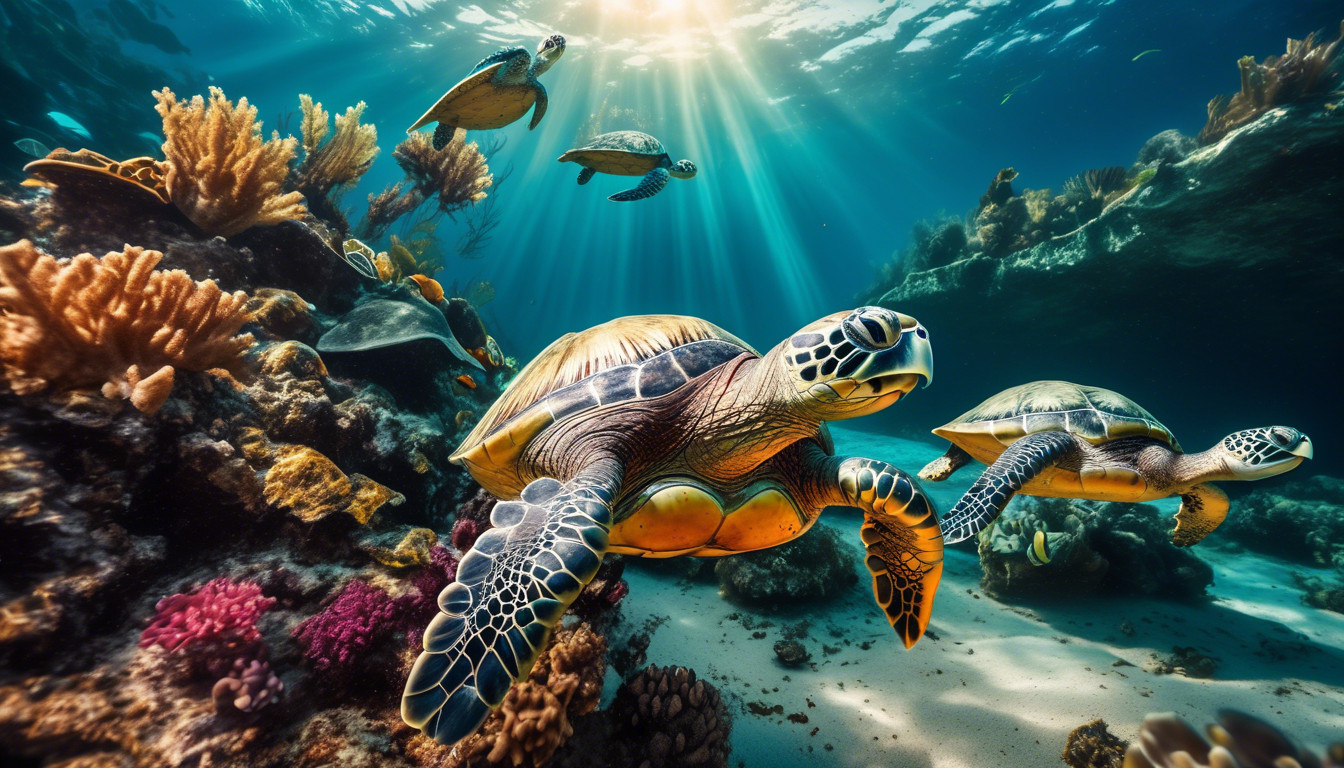
Life Cycle of Turtles
The life cycle of sea turtles goes through several key stages, from laying eggs on beaches to long migrations in search of food.
- Egg laying occurs mainly at night, which provides protection from predators.
- Females return to the same beaches where they were hatched, highlighting the importance of preserving coastal ecosystems.
- The eggs hatch after about two months, and the young turtles make the risky journey to the ocean.
The juvenile period of sea turtles is spent in pelagic waters, where they grow and develop. They reach sexual maturity after a dozen or so years, making the protection of their habitat crucial to the survival of the species.
Threats such as:
- pollution
- loss of habitat
can significantly impact their life cycle.
Protecting sea turtles requires:
- International cooperation.
- Understanding their role in marine ecosystems.
Their presence affects:
- coral reef health
- jellyfish populations
which highlights their importance for maintaining the ecological balance in the oceans.

Sea turtle migrations
Many species of sea turtles travel thousands of kilometers during their migrations , crossing oceans in search of suitable places to feed and breed. These amazing creatures are part of delicate marine ecosystems where their presence affects biological balance.
Sea turtle migrations play a crucial role in the transport of nutrients between different parts of the ocean, contributing to the health of the entire ecosystem.
Sea turtles can navigate accurately by sensing subtle changes in the Earth's magnetic field.
These navigational abilities are essential for their survival and effective movement between:
- nesting places
- feeding grounds
Protecting these migratory routes is extremely important because disruption can lead to drastic population reductions.
International cooperation is crucial for the conservation of sea turtles , as their migration passes through the waters of many countries.
Environmental awareness and collective environmental protection actions are essential to:
- Ensure the survival of these fascinating creatures.
- Preserve their natural ecosystems.

Turtles as an endangered species
Many species of sea turtles are listed as endangered due to human activity and loss of natural habitat . Intensive fishing, ocean pollution, and the destruction of nesting beaches are leading to a drastic decline in the population of these amazing creatures. Sea turtles play a key role in maintaining the balance of marine ecosystems, affecting the health of coral reefs and marine plant populations.
Protecting sea turtles requires coordinated action at many levels:
-
Introduction of protection zones and educational programs for local communities to understand the importance of these animals for ecosystems.
-
Legal regulations restricting fishing and pollution of the marine environment are essential to their survival.
-
International cooperation plays a key role in the protection of sea turtle habitats, which allows for the effective implementation of conservation strategies.
The pursuit of preserving marine diversity provides a foundation for future generations to enjoy the richness of nature.
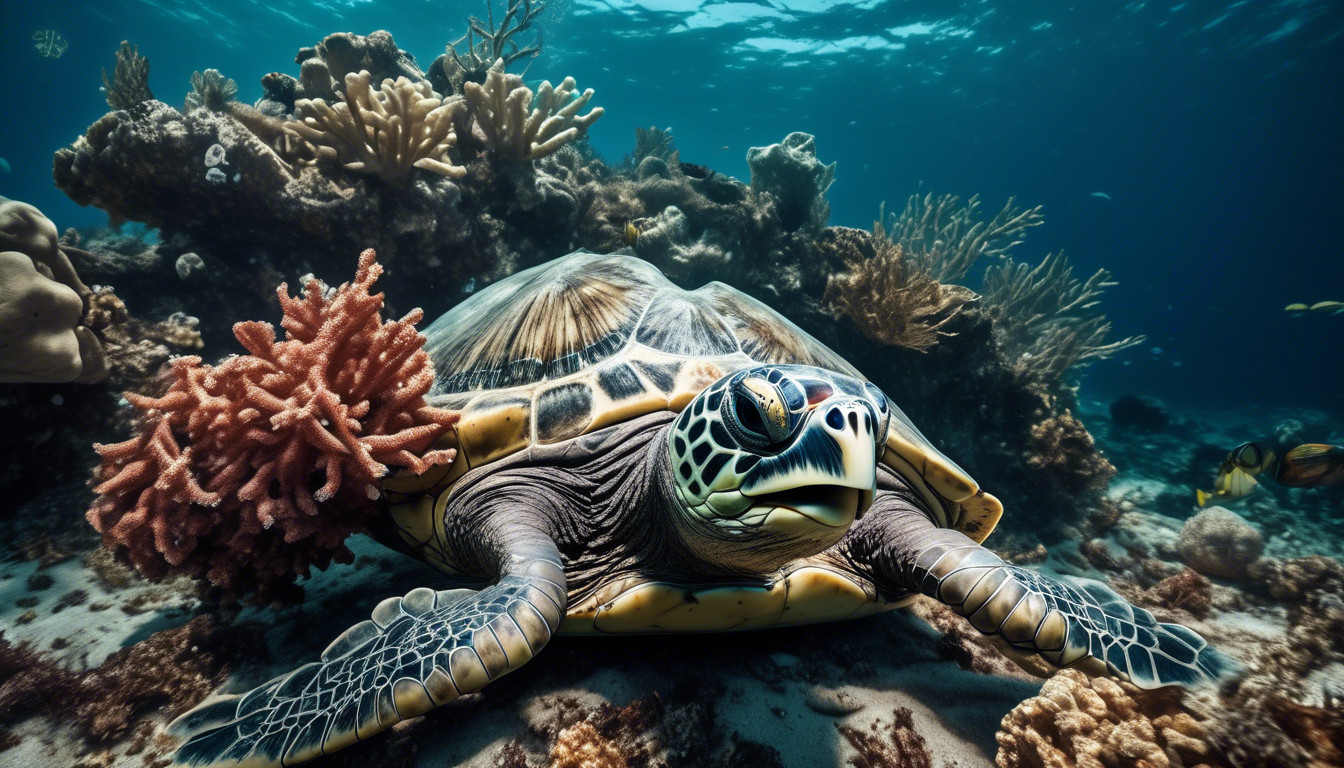
Impact of climate change
Climate change is having a significant impact on sea turtle habitats, leading to rising water temperatures and sea levels, which threaten their natural habitats.
The influence of temperature on the gender of the offspring :
- Increases in sea water temperature affect the gender of turtle offspring.
- The temperature of the sand in which the eggs are incubated determines whether males or females will hatch.
Destabilization of ecosystems :
- Sea turtles play a crucial role in ecosystems that are at risk of destabilization.
- Destabilization affects the entire food web.
Rising sea levels threaten the beaches where sea turtles lay their eggs. These types of environmental changes can lead to fewer suitable nesting sites, which directly affects turtle populations.
Ecosystem protection priority :
- Protecting these ecosystems is becoming a priority to ensure the survival of sea turtles and the balance of marine habitats.
Collective effort :
- Understanding and counteracting the effects of climate change requires a collective effort.
- The engagement of both scientists and local communities is crucial to ensuring a sustainable future for all ocean inhabitants.
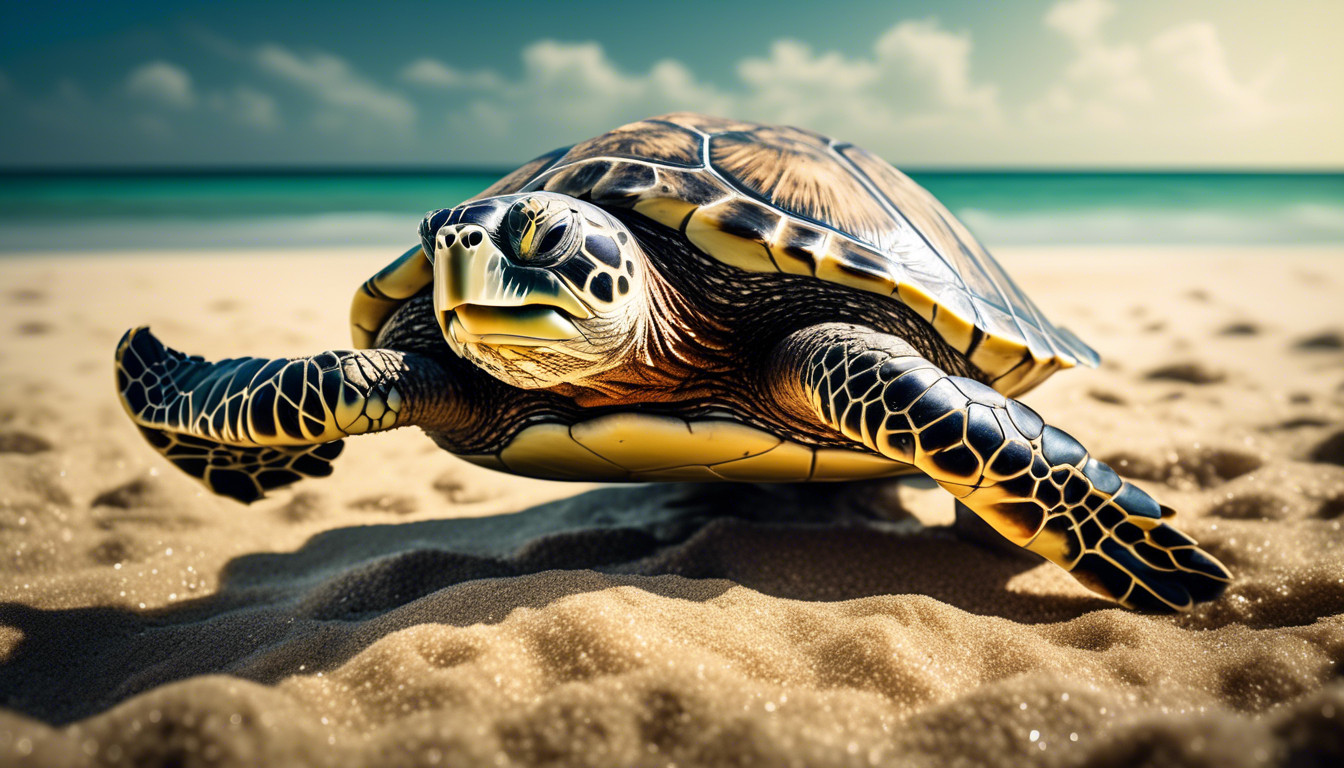
Protection of turtle habitats
Preserving natural habitats is crucial for the survival of sea turtles, and conservation efforts must be aimed at minimizing threats to their environment.
Contemporary challenges include:
- Water pollution
- Development of coastal infrastructure
- Tourist activity
These factors pose significant threats to sea turtles.
Protecting sea turtle habitats involves implementing strategies to maintain the integrity of their ecosystems. Establishing protected areas that allow for the creation of safe nesting and migration zones is key.
Effective protection requires:
- Coordination of international activities
- Local community involvement
Education and raising awareness of the importance of marine ecosystems promote a better understanding of the need to protect them.
It is also worth noting the growing importance of scientific research , which provides valuable information on the population dynamics of sea turtles.
Conservation initiatives such as:
- Reducing plastic waste
- Promoting sustainable fishing practices
can contribute significantly to the conservation of these unique species.

Ecosystem interactions
The interactions of marine organisms in ecosystems play a key role in maintaining biological balance.
Sea turtles are an essential part of these interactions, playing a unique role in biodiversity conservation. Their presence influences the structure and functioning of marine ecosystems.
- Sea turtles contribute to the health of coral reefs and populations of marine plants, such as sea grasses, through their foraging behaviour.
Coral reefs , home to many species, benefit from the turtles' presence because of their ability to control sponge populations. This in turn allows coral to grow.
- Additionally, sea turtles support the regeneration of key habitats by dispersing seagrass seeds.
Protecting sea turtles therefore becomes not only a matter of preserving the species, but also of the integrity of marine ecosystems.
- International cooperation and local conservation initiatives are essential to ensure long-term support for these fascinating creatures and their habitat.
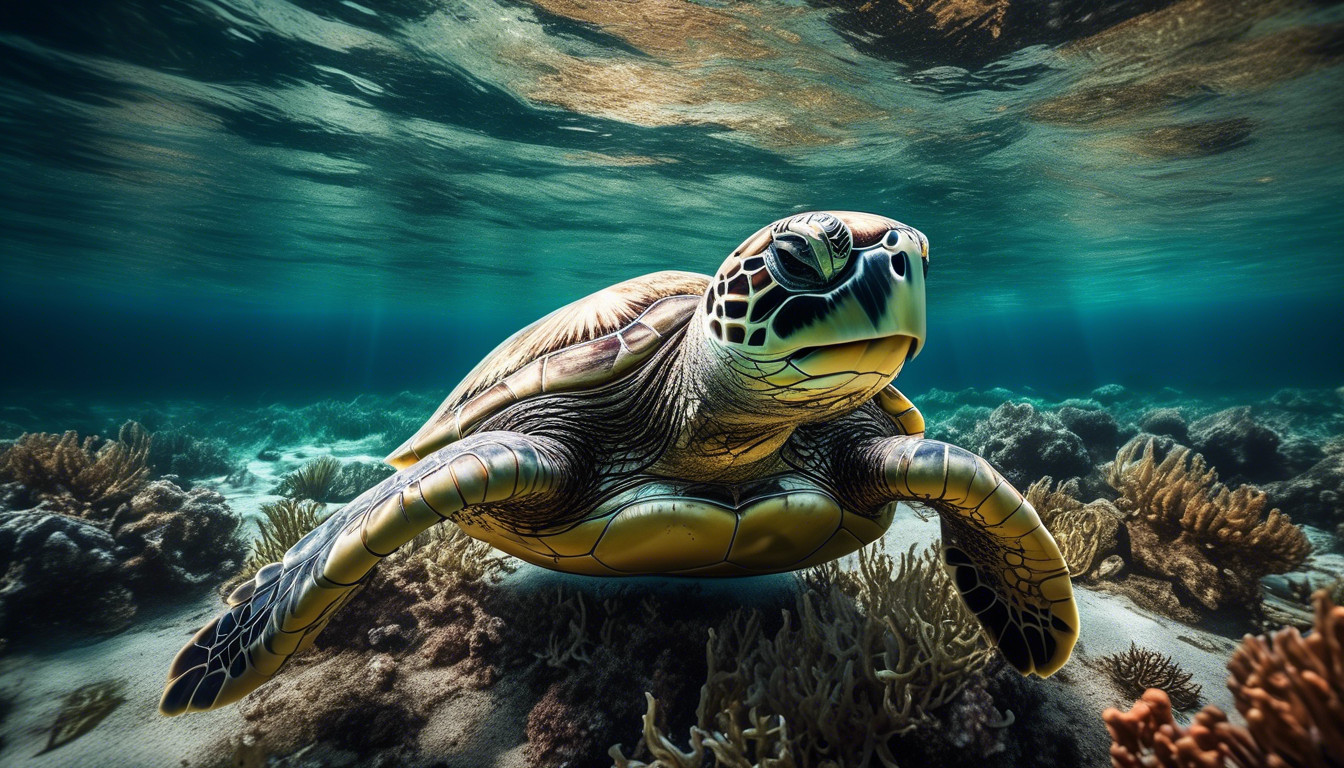
Sea Turtle Behavior
The diverse behaviours of sea turtles , such as long-distance migrations and specialized feeding habits, play a key role in their ability to survive and adapt in dynamic ocean environments.
Sea turtle migrations involve journeys of thousands of kilometers. This allows turtles to access different ecosystems and food resources. These extraordinary journeys contribute to the balance of marine ecosystems by supporting:
- coral reef health,
- food chains.
The feeding behavior of sea turtles is equally fascinating. Each species has its own unique dietary preferences, which help diversify ecological niches. Examples of dietary preferences include:
- turtles preferring sea grass,
- turtles concentrating on jellyfish,
- turtles selecting molluscs.
Such dietary diversity allows for efficient use of available resources and minimizes inter-species competition.
In the context of conservation , understanding these behaviors is crucial. By studying migrations and feeding habits, it is possible to develop effective conservation strategies that support the survival of sea turtles and the health of entire ocean ecosystems.
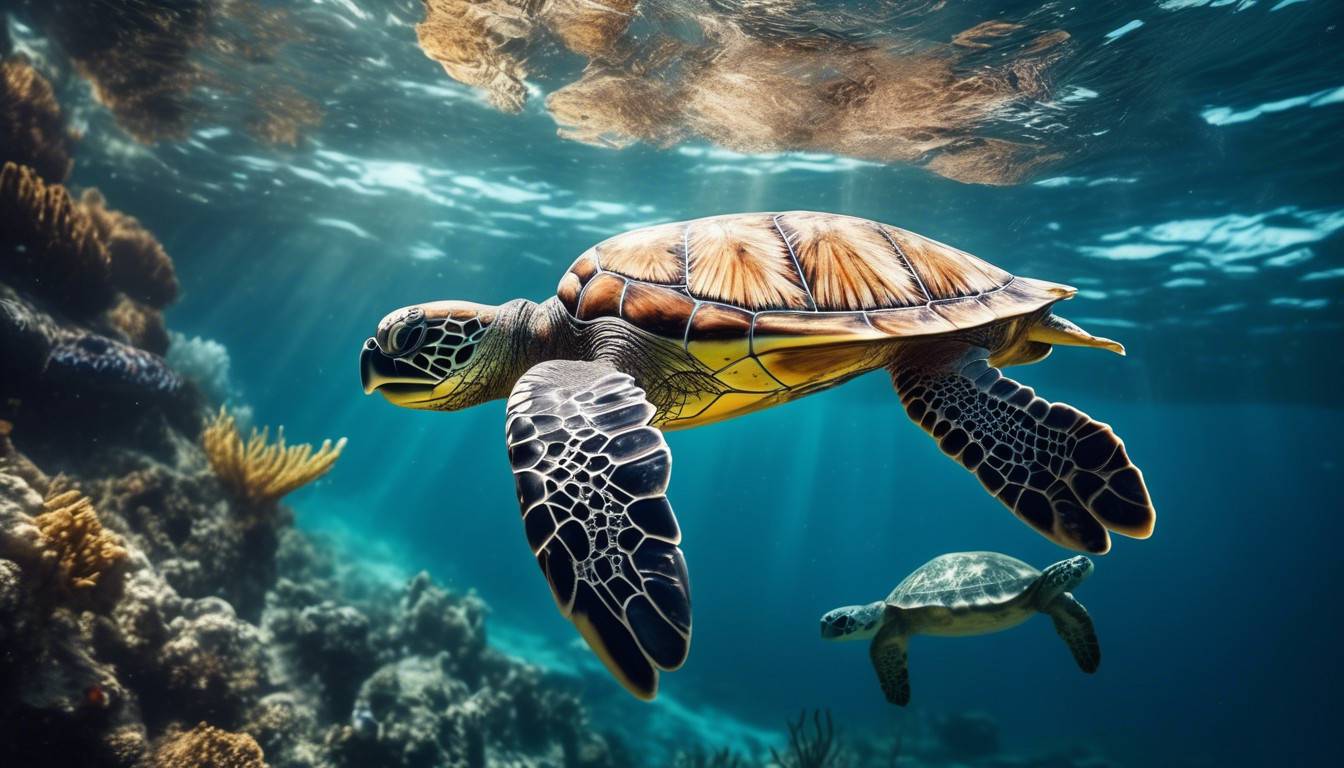
The importance of species protection
Effective species protection is essential for maintaining biodiversity and stability of ocean ecosystems.
Sea turtles play a key role in maintaining the health of these ecosystems. As consumers of jellyfish and other organisms, they influence the biological balance of the sea, which supports species diversity. In addition, their presence affects:
- food chain dynamics
- the health of coral reefs, which are home to many marine creatures
Protecting sea turtles is important not only for the species themselves, but also for the people who use them. Many coastal communities rely on the resources these ecosystems provide, such as:
- fishing
- tourism
By preserving the sea turtle population, not only biodiversity is supported, but also the local economy.
Global efforts to protect sea turtles are therefore crucial to maintaining sustainable development, allowing for the shared use of marine resources by present and future generations.

Education and social awareness
Raising public awareness and educating sea turtles is key to their effective conservation. Sea turtles play a vital role in marine ecosystems, contributing to maintaining biological balance.
Educational activities are aimed at various social groups, including children and youth. They contribute to a better understanding of the importance of these animals and their conservation needs.
Non-governmental organizations and educational institutions conduct information programs and campaigns that emphasize the importance of protecting sea turtles.
Important threats faced by sea turtles include :
- pollution
- climate change
- illegal fishing
Thanks to knowledge, society can support pro-ecological initiatives and make informed decisions that will support nature conservation.
Joint action and the involvement of different sectors of society are essential to ensure the sustainability and health of the ecosystems in which sea turtles play a key role. Education and public awareness are the foundation for the effective protection of these extremely important animals.
Podsumowanie
If you are fascinated by sea turtles, then you have certainly learned many interesting facts while reading this article. Remember that protecting these animals is crucial to maintaining the balance of marine ecosystems.
Through education and public awareness, we can help ensure a safe environment for turtles and other endangered species.
Be active in nature conservation activities!
- Educate yourself and others about threats to sea turtles.
- Get involved in local environmental initiatives.
- Support nature conservation organizations.
Your actions can have a real impact on the future of these amazing creatures.
Scritto da Topcontent/AI
Articolo creato da Topcontent/AI
Provaci gratuitamente. Inserisci una parola chiave per la quale vuoi posizionarti e noi creeremo l'articolo mentre ti iscrivi.